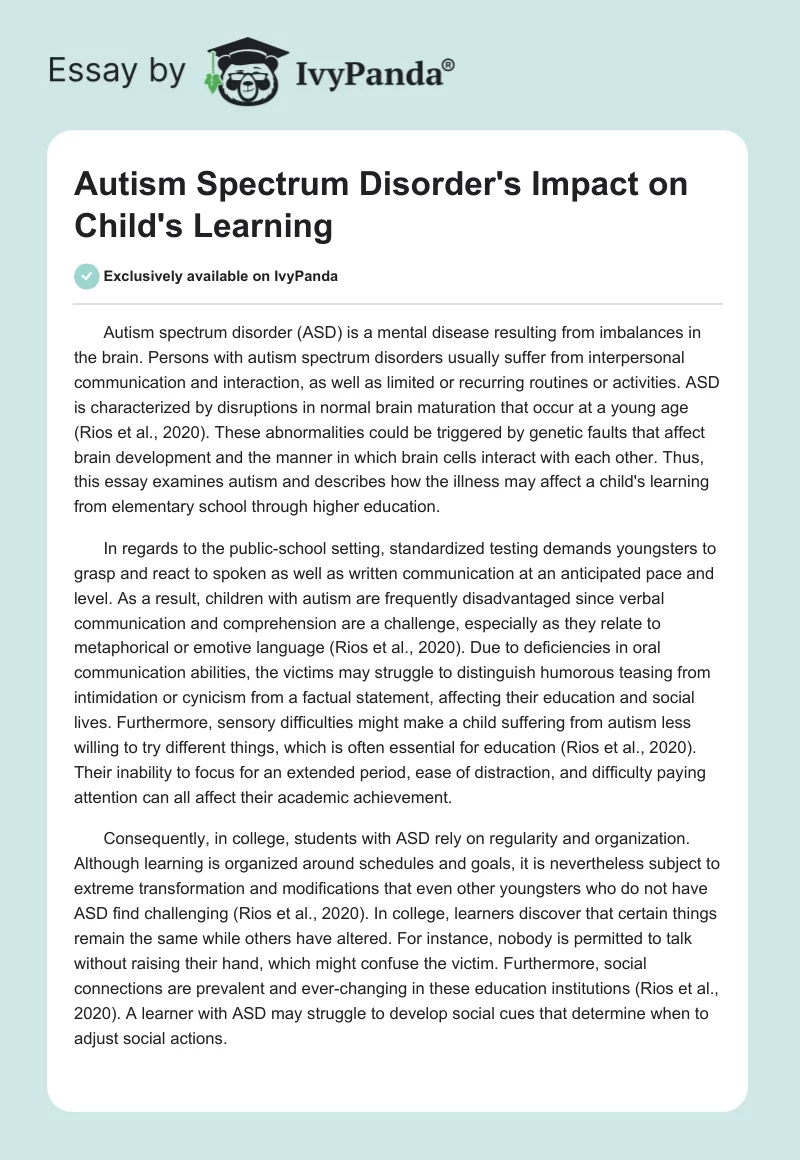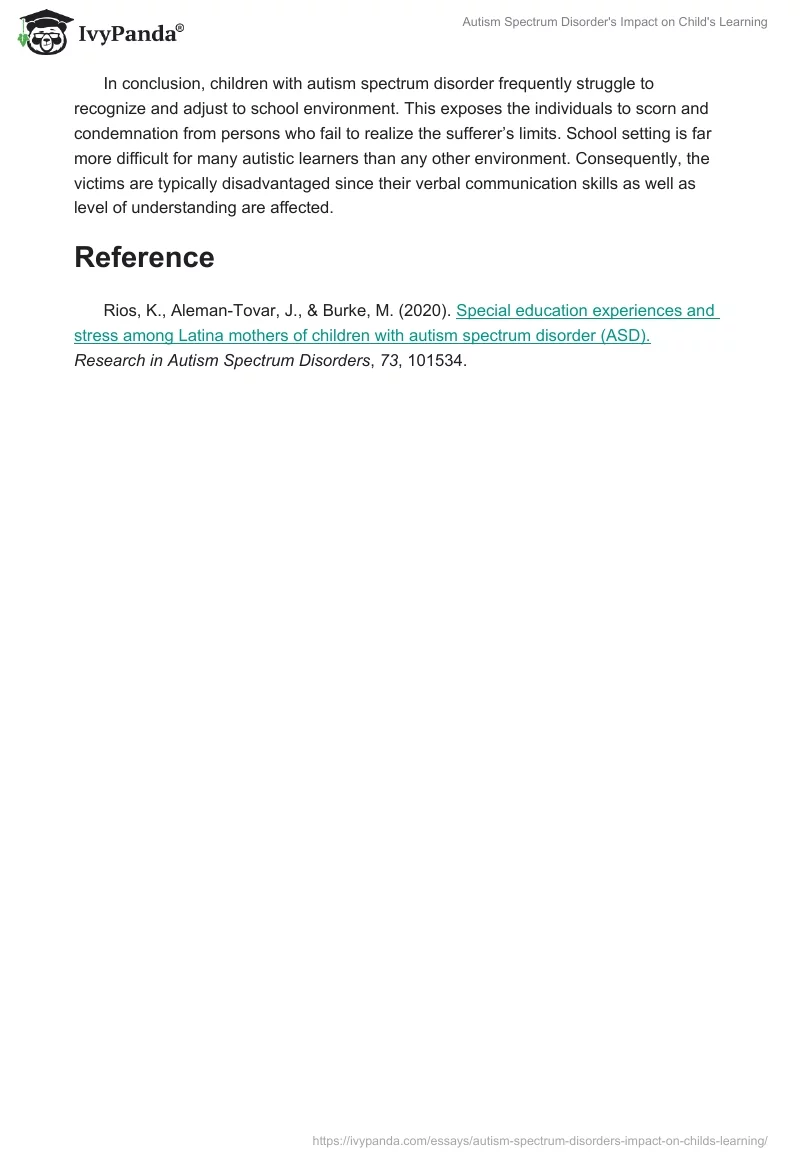Autism spectrum disorder (ASD) is a mental disease resulting from imbalances in the brain. Persons with autism spectrum disorders usually suffer from interpersonal communication and interaction, as well as limited or recurring routines or activities. ASD is characterized by disruptions in normal brain maturation that occur at a young age (Rios et al., 2020). These abnormalities could be triggered by genetic faults that affect brain development and the manner in which brain cells interact with each other. Thus, this essay examines autism and describes how the illness may affect a child’s learning from elementary school through higher education.
In regards to the public-school setting, standardized testing demands youngsters to grasp and react to spoken as well as written communication at an anticipated pace and level. As a result, children with autism are frequently disadvantaged since verbal communication and comprehension are a challenge, especially as they relate to metaphorical or emotive language (Rios et al., 2020). Due to deficiencies in oral communication abilities, the victims may struggle to distinguish humorous teasing from intimidation or cynicism from a factual statement, affecting their education and social lives. Furthermore, sensory difficulties might make a child suffering from autism less willing to try different things, which is often essential for education (Rios et al., 2020). Their inability to focus for an extended period, ease of distraction, and difficulty paying attention can all affect their academic achievement.
Consequently, in college, students with ASD rely on regularity and organization. Although learning is organized around schedules and goals, it is nevertheless subject to extreme transformation and modifications that even other youngsters who do not have ASD find challenging (Rios et al., 2020). In college, learners discover that certain things remain the same while others have altered. For instance, nobody is permitted to talk without raising their hand, which might confuse the victim. Furthermore, social connections are prevalent and ever-changing in these education institutions (Rios et al., 2020). A learner with ASD may struggle to develop social cues that determine when to adjust social actions.
In conclusion, children with autism spectrum disorder frequently struggle to recognize and adjust to school environment. This exposes the individuals to scorn and condemnation from persons who fail to realize the sufferer’s limits. School setting is far more difficult for many autistic learners than any other environment. Consequently, the victims are typically disadvantaged since their verbal communication skills as well as level of understanding are affected.
Reference
Rios, K., Aleman-Tovar, J., & Burke, M. (2020). Special education experiences and stress among Latina mothers of children with autism spectrum disorder (ASD).Research in Autism Spectrum Disorders, 73, 101534.


